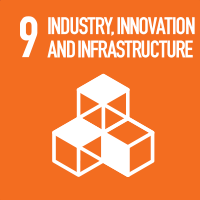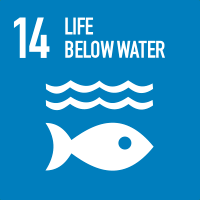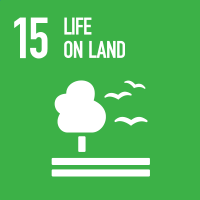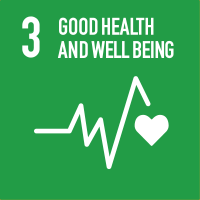Studying at the University of Verona
Here you can find information on the organisational aspects of the Programme, lecture timetables, learning activities and useful contact details for your time at the University, from enrolment to graduation.
Academic calendar
The academic calendar shows the deadlines and scheduled events that are relevant to students, teaching and technical-administrative staff of the University. Public holidays and University closures are also indicated. The academic year normally begins on 1 October each year and ends on 30 September of the following year.
Course calendar
The Academic Calendar sets out the degree programme lecture and exam timetables, as well as the relevant university closure dates..
| Period | From | To |
|---|---|---|
| Semester 1 | Oct 3, 2022 | Jan 27, 2023 |
| Semester 2 | Mar 6, 2023 | Jun 16, 2023 |
| Session | From | To |
|---|---|---|
| Sessione invernale d'esame | Jan 30, 2023 | Mar 3, 2023 |
| Sessione estiva d'esame | Jun 19, 2023 | Jul 31, 2023 |
| Sessione autunnale d'esame | Sep 4, 2023 | Sep 29, 2023 |
| Session | From | To |
|---|---|---|
| Sessione di laurea estiva | Jul 13, 2023 | Jul 13, 2023 |
| Sessione di laurea autunnale | Oct 9, 2023 | Oct 9, 2023 |
| Sessione autunnale di laurea - dicembre | Dec 4, 2023 | Dec 4, 2023 |
| sessione invernale | Mar 6, 2024 | Mar 6, 2024 |
| Period | From | To |
|---|---|---|
| Ponte Festa di tutti i Santi | Oct 31, 2022 | Nov 1, 2022 |
| Ponte dell'Immacolata Concezione | Dec 8, 2022 | Dec 9, 2022 |
| Vacanze natalizie | Dec 23, 2022 | Jan 8, 2023 |
| Vacanze di Pasqua | Apr 7, 2023 | Apr 10, 2023 |
| Festa della Liberazione | Apr 24, 2023 | Apr 25, 2023 |
| Festa dei Lavoratori | May 1, 2023 | May 1, 2023 |
| Festa del Santo Patrono | May 21, 2023 | May 21, 2023 |
| Festa della Repubblica | Jun 2, 2023 | Jun 2, 2023 |
| Chiusura estiva | Aug 14, 2023 | Aug 19, 2023 |
Exam calendar
Exam dates and rounds are managed by the relevant Science and Engineering Teaching and Student Services Unit.
To view all the exam sessions available, please use the Exam dashboard on ESSE3.
If you forgot your login details or have problems logging in, please contact the relevant IT HelpDesk, or check the login details recovery web page.
Should you have any doubts or questions, please check the Enrollment FAQs
Academic staff
 elisa.artegiani@univr.it
elisa.artegiani@univr.it
 emil.milan@univr.it
emil.milan@univr.it
 chiara.nardon@univr.it
chiara.nardon@univr.it
 claudio.tomazzoli@univr.it
claudio.tomazzoli@univr.it
 franco.zivcovich@univr.it
franco.zivcovich@univr.it
Study Plan
The Study Plan includes all modules, teaching and learning activities that each student will need to undertake during their time at the University.
Please select your Study Plan based on your enrollment year.
1° Year
| Modules | Credits | TAF | SSD |
|---|
2° Year activated in the A.Y. 2023/2024
| Modules | Credits | TAF | SSD |
|---|
3° Year It will be activated in the A.Y. 2024/2025
| Modules | Credits | TAF | SSD |
|---|
| Modules | Credits | TAF | SSD |
|---|
| Modules | Credits | TAF | SSD |
|---|
| Modules | Credits | TAF | SSD |
|---|
Legend | Type of training activity (TTA)
TAF (Type of Educational Activity) All courses and activities are classified into different types of educational activities, indicated by a letter.
General Microbiology (2023/2024)
Teaching code
4S008408
Credits
9
Language
Italian
Also offered in courses:
- General and food microbiology with laboratory - Microbiologia generale of the course Bachelors' degree in Nutraceutical sciences and food health
Scientific Disciplinary Sector (SSD)
BIO/19 - MICROBIOLOGY
Courses Single
Authorized with reserve
The teaching is organized as follows:
General Microbiology
laboratorio [1° turno]
laboratorio [2° turno]
Learning objectives
Module: THEORETICAL LECTURES The course is designed to introduce students to the basic knowledge of the microbial world as well as to illustrate the main methodological tools for research in microbiology, with a detailed comparison of the properties among the different type of microorganisms, both prokaryotes and eukaryotes, including bacteria, archaea, yeasts, filamentous fungi, and - in a distinct section, since non-cellular organisms – the viruses. During the first series of lectures, general themes will be addressed such as morphological and functional diversity, genetic, biochemical and metabolic features, evolutionary aspects and ecology of microorganisms, including how they interact with specific environmental factors. In the second series of lectures, microorganisms will be discussed as reference systems for fundamental studies dealing with molecular biology as well as biochemistry and metabolic regulatory mechanisms. Also elements will be provided about the methods for microbe cultivation and on strategies for the control of microbial growth and the conditioning of the metabolism. The third part of lectures will cover the detailed study of particularly important microbial groups to be defined with the Students. Module: LABORATORY PRACTICES This laboratory module is designed to guide students in the acquisition of techniques and in the development of manipulative skills all necessary for the identification and the study of both structural and functional characteristics of the microorganisms of interest, as well as for a proper handling of microbial cultures within research activities. The main objective of the module is to provide students with the basic tools, represented by traditional analytical procedures in microbiology, but also with the knowledge of advanced techniques, based on molecular methods of investigation, useful for basic research but even the definition of the correct approach to issues related to the many themes of applied microbiology.
Prerequisites and basic notions
All the basic courses of the 1st year.
Pre-requisites: General and cellular biology
Knowledge of biochemistry
Basic bioinformatics skills
Program
------------------------
UL: teoria
------------------------
1. MICROBIAL EVOLUTION AND DIVERSITY: Origin and Evolution of the Microbial Life; Bacteria; Archaea; Eukaryotic Cell and Eukaryotic Microorganisms; Microbial Taxonomy and Systematics.
2. PRINCIPLES OF MICROBIOLOGY: Cell Structure and Function in Bacteria, Archaea and Fungi (Yeast and Moulds);
3. MICROBIAL GROWTH: Microbial Nutrition, Culture and Growth Aspects; Antimicrobial Agents and Microbial Growth Control.
4. METABOLIC DIVERSITY: Phototrophy and autotrophy , Aerobic (EMP pathway, Enther-Doudoroff pathway, Hexose Monophosphate Shunt + electron transport chain and proton motive force generation) and Anaerobic Respiration Fermentations (homolactic and heterolactic, mixed-acid, butane-diol, propionic, butanol/acetone fermentations), Chemolithotrophy; Other biosyntheses (ammonia assimilation, nitrogen fixation).
5. VIRAL DIVERSITY: Overview of Different Viral Groups; Bacteriophages.
6. HINTS on BACTERIAL GENETICS: Genetic Recombination: Transformation, Conjugation, Transduction, and MOLECULAR BIOLOGY AND GENE EXPRESSION Regulation of Gene Expression.
7. MICROBIAL INTERACTIONS. Type of relationships between microorganisms (commensalism, parasitism, mutualism). The microbial consortia. Symbiotic associations: interactions between species. The mycorrhizae.
8. MICROBIAL BIODIVERSITY AND INVESTIGATION METHODS: The cultivable and non-cultivable microbial biodiversity. Identification, classification, and nomenclature of cultivable biodiversity. The nomenclature: rules and tools (Code of the nomenclature and LPSN - List of Prokaryotic Names with Standing in Nomenclature). The concept of species, the definition of strain and type strain. The classical systematic approaches (phenetic, numerical, polyphasic), the phylogenetic approach. The investigation techniques, from the hybridization of total DNA to the sequencing and comparison of genomes and levels of taxonomic resolution. Non-cultivable biodiversity: culture-independent study techniques (PCR-DGGE, metabarcoding, metagenomics) and their nomenclature (Candidatus).
9. GROUPS OF MICROORGANISMS: The taxonomic levels and the main groups of microorganisms Proteobacteria, Firmicutes, Actinobacteria, Deinococcus-Thermus.
------------------------
UL: laboratorio
------------------------
The aim of the laboratory is to demonstrate to the student some techniques of microbiological analysis of a natural source, through the use of analytical methods based on morphological, physiological and biochemical tests to evaluate the types of microorganisms present which in the source itself and to classify them by a taxonomical approach. In the first teaching credit, it will be displayed some techniques of plate count using general-purpose media to count and isolate bacteria and fungi, microbial growth patterns in tube and plate, motility assay and culture maintaining methods. In the second teaching credit, it will be displayed some methods used to carry out a preliminary identification of bacteria and fungi. Optical microscopy for morphological analysis of cells, sugar patterns assimilation and fermentation, cell staining methods and enzymatic assays.
Molecular methods: (a) Total DNA extraction from liquid culture: i) DNA detection by means of agarose gel electrophoresis, ii) DNA quantification on BioPhotometer through analysis of 260/280 and 260/320 ratios – (b) PCR amplification of the 16S rRNA gene sequence – (c) BOX-PCR analysis and observation of BOX profiles by agarose gel electrophoresis – (d) Analysis of 16S rRNA gene sequences of sonme unknown isolates by comparison with genetic sequence data banks: i) NCBI; ii) Ez-Taxon.- e) construction of phylogenetic trees by using 16S rRNA sequences of strains belonging to Bacillus sp. and Pseudomonas sp.
------------------------
UL: laboratorio
------------------------
The aim of the laboratory is to demonstrate to the student some techniques of microbiological analysis of a natural source, through the use of analytical methods based on morphological, physiological and biochemical tests to evaluate the types of microorganisms present which in the source itself and to classify them by a taxonomical approach. In the first teaching credit, it will be displayed some techniques of plate count using general-purpose media to count and isolate bacteria and fungi, microbial growth patterns in tube and plate, motility assay and culture maintaining methods. In the second teaching credit, it will be displayed some methods used to carry out a preliminary identification of bacteria and fungi. Optical microscopy for morphological analysis of cells, sugar patterns assimilation and fermentation, cell staining methods and enzymatic assays.
Molecular methods: (a) Total DNA extraction from liquid culture: i) DNA detection by means of agarose gel electrophoresis, ii) DNA quantification on BioPhotometer through analysis of 260/280 and 260/320 ratios – (b) PCR amplification of the 16S rRNA gene sequence – (c) BOX-PCR analysis and observation of BOX profiles by agarose gel electrophoresis – (d) Analysis of 16S rRNA gene sequences of sonme unknown isolates by comparison with genetic sequence data banks: i) NCBI; ii) Ez-Taxon.- e) construction of phylogenetic trees by using 16S rRNA sequences of strains belonging to Bacillus sp. and Pseudomonas sp.
Bibliography
Didactic methods
------------------------
UL: teoria
------------------------
Frontal lessons. In case of limitations due to COVID, supporting video material (recordings) will be provided.
------------------------
UL: laboratorio
------------------------
The laboratory will consist of group exercises, as well as lectures aimed at preparing practical activities and analyzing and discussing the results obtained.
------------------------
UL: laboratorio
------------------------
The laboratory will consist of group exercises, as well as lectures aimed at preparing practical activities and analyzing and discussing the results obtained.
Learning assessment procedures
------------------------
UL: teoria
------------------------
There are no ongoing tests. The exam will consist of an oral assessment of the degree of learning achieved on the course program. The exam consists of three or four questions posed to each candidate. The exam has a total duration of approximately 30 minutes.
------------------------
UL: laboratorio
------------------------
At the end of the practice lessons the student must be draw up a report on the results obtained in laboratory and related comments. The manuscript must be given to laboratory teachers within 15 days from the end of the practical experiences. Based on the report evaluation, a score of maximum 2 points will be attributed and it will be added to the final exam score.
------------------------
UL: laboratorio
------------------------
At the end of the practice lessons the student must be draw up a report on the results obtained in laboratory and related comments. The manuscript must be given to laboratory teachers within 15 days from the end of the practical experiences. Based on the report evaluation, a score of maximum 2 points will be attributed and it will be added to the final exam score.
Evaluation criteria
------------------------
UL: teoria
------------------------
Evaluation criteria are the degree of learning achieved on the course program, the clarity of presentation, the property of the specific technical-scientific language.
------------------------
UL: laboratorio
------------------------
Evaluation criteria include: knowledge of information, properties of language, clarity of presentation / writing.
------------------------
UL: laboratorio
------------------------
Evaluation criteria include: knowledge of information, properties of language, clarity of presentation / writing.
Criteria for the composition of the final grade
The final evaluation is expressed out of thirty. The report on the laboratory exercises will be associated with a maximum score of 2 points which contribute to the composition of the final grade and any honors.
Exam language
------------------------ UL: teoria ------------------------ ------------------------ UL: laboratorio ------------------------ ------------------------ UL: laboratorio ------------------------
Sustainable Development Goals - SDGs
This initiative contributes to the achievement of the Sustainable Development Goals of the UN Agenda 2030. More information on sustainability



Type D and Type F activities
Le attività formative di tipologia D sono a scelta dello studente, quelle di tipologia F sono ulteriori conoscenze utili all’inserimento nel mondo del lavoro (tirocini, competenze trasversali, project works, ecc.). In base al Regolamento Didattico del Corso, alcune attività possono essere scelte e inserite autonomamente a libretto, altre devono essere approvate da apposita commissione per verificarne la coerenza con il piano di studio. Le attività formative di tipologia D o F possono essere ricoperte dalle seguenti attività.
1. Insegnamenti impartiti presso l'Università di Verona
Comprendono gli insegnamenti sotto riportati e/o nel Catalogo degli insegnamenti (che può essere filtrato anche per lingua di erogazione tramite la Ricerca avanzata).
Modalità di inserimento a libretto: se l'insegnamento è compreso tra quelli sottoelencati, lo studente può inserirlo autonomamente durante il periodo in cui il piano di studi è aperto; in caso contrario, lo studente deve fare richiesta alla Segreteria, inviando a carriere.scienze@ateneo.univr.it il modulo nel periodo indicato.
2. Attestato o equipollenza linguistica CLA
Oltre a quelle richieste dal piano di studi, per gli immatricolati dall'A.A. 2021/2022 vengono riconosciute:
- Lingua inglese: vengono riconosciuti 3 CFU per ogni livello di competenza superiore a quello richiesto dal corso di studio (se non già riconosciuto nel ciclo di studi precedente).
- Altre lingue e italiano per stranieri: vengono riconosciuti 3 CFU per ogni livello di competenza a partire da A2 (se non già riconosciuto nel ciclo di studi precedente).
Tali cfu saranno riconosciuti, fino ad un massimo di 6 cfu complessivi, di tipologia F se il piano didattico lo consente, oppure di tipologia D. Ulteriori crediti a scelta per conoscenze linguistiche potranno essere riconosciuti solo se coerenti con il progetto formativo dello studente e se adeguatamente motivati.
Gli immatricolati fino all'A.A. 2020/2021 devono consultare le informazioni che si trovano qui.
Modalità di inserimento a libretto: richiedere l’attestato o l'equipollenza al CLA e inviarlo alla Segreteria Studenti - Carriere per l’inserimento dell’esame in carriera, tramite mail: carriere.scienze@ateneo.univr.it
3. Competenze trasversali
Scopri i percorsi formativi promossi dal TALC - Teaching and learning center dell'Ateneo, destinati agli studenti regolarmente iscritti all'anno accademico di erogazione del corso https://talc.univr.it/it/competenze-trasversali
Modalità di inserimento a libretto: non è previsto l'inserimento dell'insegnamento nel piano di studi. Solo in seguito all'ottenimento dell'Open Badge verranno automaticamente convalidati i CFU a libretto. La registrazione dei CFU in carriera non è istantanea, ma ci saranno da attendere dei tempi tecnici.
4. CONTAMINATION LAB
Il Contamination Lab Verona (CLab Verona) è un percorso esperienziale con moduli dedicati all'innovazione e alla cultura d'impresa che offre la possibilità di lavorare in team con studenti e studentesse di tutti i corsi di studio per risolvere sfide lanciate da aziende ed enti. Il percorso permette di ricevere 6 CFU in ambito D o F. Scopri le sfide: https://www.univr.it/clabverona
ATTENZIONE: Per essere ammessi a sostenere una qualsiasi attività didattica, incluse quelle a scelta, è necessario essere iscritti all'anno di corso in cui essa viene offerta. Si raccomanda, pertanto, ai laureandi delle sessioni di dicembre e aprile di NON svolgere attività extracurriculari del nuovo anno accademico, cui loro non risultano iscritti, essendo tali sessioni di laurea con validità riferita all'anno accademico precedente. Quindi, per attività svolte in un anno accademico cui non si è iscritti, non si potrà dar luogo a riconoscimento di CFU.
5. Periodo di stage/tirocinio
Oltre ai CFU previsti dal piano di studi (verificare attentamente quanto indicato sul Regolamento Didattico): qui informazioni su come attivare lo stage.
Insegnamenti e altre attività che si possono inserire autonomamente a libretto
| years | Modules | TAF | Teacher |
|---|---|---|---|
| 3° | LaTeX Language | D |
Enrico Gregorio
(Coordinator)
|
| 3° | Python programming language | D |
Carlo Combi
(Coordinator)
|
| 3° | History and Didactics of Geology | D |
Guido Gonzato
(Coordinator)
|
Career prospects
Module/Programme news
News for students
There you will find information, resources and services useful during your time at the University (Student’s exam record, your study plan on ESSE3, Distance Learning courses, university email account, office forms, administrative procedures, etc.). You can log into MyUnivr with your GIA login details: only in this way will you be able to receive notification of all the notices from your teachers and your secretariat via email and soon also via the Univr app.
Graduation
List of theses and work experience proposals
| theses proposals | Research area |
|---|---|
| Studio delle proprietà di luminescenza di lantanidi in matrici proteiche | Synthetic Chemistry and Materials: Materials synthesis, structure-properties relations, functional and advanced materials, molecular architecture, organic chemistry - Colloid chemistry |
| Multifunctional organic-inorganic hybrid nanomaterials for applications in Biotechnology and Green Chemistry | Synthetic Chemistry and Materials: Materials synthesis, structure-properties relations, functional and advanced materials, molecular architecture, organic chemistry - New materials: oxides, alloys, composite, organic-inorganic hybrid, nanoparticles |
| Dinamiche della metilazione del DNA e loro contributo durante il processo di maturazione della bacca di vite. | Various topics |
| Risposte trascrittomiche a sollecitazioni ambientali in vite | Various topics |
| Studio delle basi genomico-funzionali del processo di embriogenesi somatica in vite | Various topics |
Attendance
As stated in the Teaching Regulations for the A.Y. 2022/2023, attendance is not mandatory. However, professors may require students to attend lectures for a minimum of hours in order to be able to take the module exam, in which case the methods that will be used to check attendance will be explained at the beginning of the module.


 +39 045 802 7949
+39 045 802 7949















































